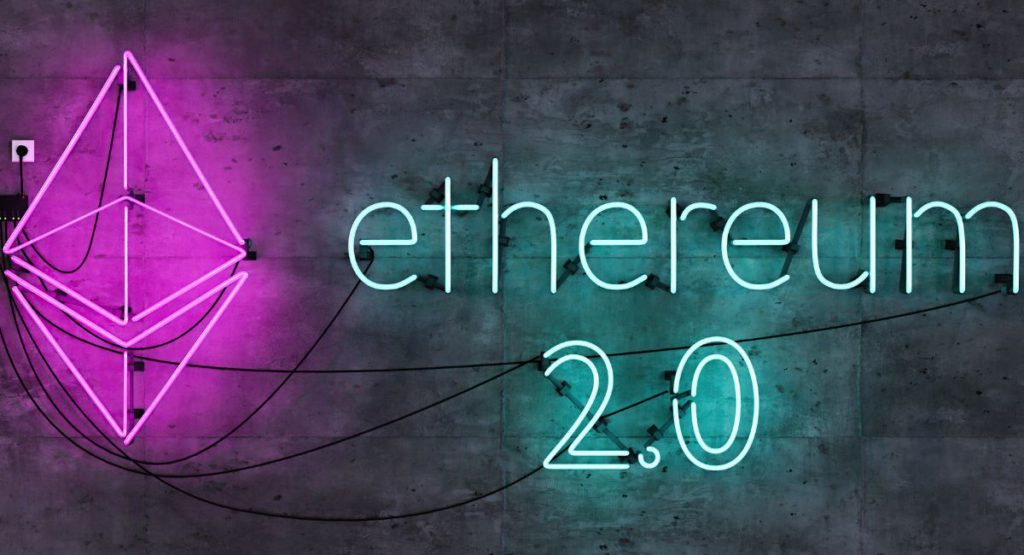What Impact Did Ethereum 2.0 Brought On The Crypto Ecosystem And Beyond
The cryptocurrency landscape has seen remarkable growth and innovation over the years, but few developments have generated as much anticipation and excitement as Ethereum 2.0. This significant upgrade to the Ethereum blockchain promises to transform not only the crypto ecosystem but also the broader world of technology and finance. In this article, we will delve into Ethereum 2.0’s potential impact, the problems it aims to solve, and how it might reshape the future.
Understanding Ethereum 2.0: The Beacon of Progress

Ethereum, often referred to as the “world computer,” has been a driving force behind blockchain technology since its inception in 2015. Ethereum introduced smart contracts, enabling developers to create decentralized applications (DApps) and launch their tokens via initial coin offerings (ICOs). However, the Ethereum network has faced challenges, primarily scalability issues that have limited its potential for mass adoption.
Ethereum 2.0, also known as Eth2 or Serenity, aims to address these fundamental issues by transitioning from a Proof of Work (PoW) to a Proof of Stake (PoS) consensus mechanism, among other improvements.
Let’s explore the potential impacts of Ethereum 2.0’s transformation.

1. Scalability and Speed: Unleashing the Next Wave of DApps
One of the most pressing issues Ethereum has faced is scalability. The existing Ethereum network can become congested during periods of high demand, resulting in slow transaction speeds and high gas fees. Ethereum 2.0 introduces shard chains, each capable of processing transactions independently. This enables parallel processing, significantly increasing the network’s capacity and transaction throughput.
The impact on DApps is profound. With greater scalability and faster transaction speeds, developers can create more sophisticated and responsive applications, potentially unlocking new use cases across various industries, from finance to gaming.
2. Energy Efficiency: A Greener Blockchain
Ethereum 2.0’s transition to PoS is not just about scalability; it also addresses environmental concerns associated with PoW blockchains like Bitcoin. PoS reduces the energy consumption required for mining and securing the network. This shift aligns with the growing global emphasis on sustainability and environmentally responsible technology.
As the world looks for more eco-friendly alternatives, Ethereum 2.0’s green approach might attract more investors and users, leading to broader adoption and investment in the platform.
3. Security and Decentralization: A More Robust Network
The move to PoS enhances the security and decentralization of the Ethereum network. Validators, who replace miners in validating transactions, are incentivized to act honestly by staking their own cryptocurrency as collateral. This reduces the risk of attacks, making the network more secure and resistant to manipulation.
A more secure and decentralized network can attract a wider range of applications, including those in sectors where data integrity and trust are paramount, such as healthcare and supply chain management.
4. Staking Opportunities: Passive Income for Cryptocurrency Holders
Ethereum 2.0 introduces the concept of staking, where users can lock up their cryptocurrency as collateral to validate transactions and earn rewards. This provides an opportunity for passive income for cryptocurrency holders, potentially making Ethereum more attractive for long-term investors.
The ease of participation in staking can attract a broader demographic of users and investors, further expanding the Ethereum ecosystem.
5. DeFi and NFT Growth: Fueling the Crypto Renaissance
Ethereum is already the epicenter of decentralized finance (DeFi) and non-fungible tokens (NFTs), and Ethereum 2.0’s improvements will only enhance these sectors. Faster transaction speeds and lower fees will make DeFi applications more efficient and user-friendly. Moreover, the increased security will boost confidence in DeFi platforms.
For NFTs, Ethereum 2.0’s scalability will enable artists and creators to mint and trade NFTs with less environmental impact and lower costs, potentially fueling the growth of the digital art and collectibles market.
6. Cross-Chain Compatibility: A More Interconnected Crypto Ecosystem
Ethereum 2.0’s enhancements are not limited to its own blockchain. The introduction of shard chains and the Beacon Chain will facilitate greater interoperability with other blockchains. This cross-chain compatibility could lead to the creation of a more interconnected crypto ecosystem, where assets and data can flow seamlessly between various networks.
7. The Broader Impact: Eth2 Beyond Crypto
While Ethereum 2.0’s primary focus is on blockchain and cryptocurrency, its impact extends beyond these realms. The emphasis on energy efficiency aligns with global sustainability goals. The security and trust elements are applicable to various industries, from logistics to legal, where blockchain can be a transformative force.
Also, read – Ethereum 2.0: What’s New and What Is The Future Of Ethereum 2.0
How ethereum 2.0 has changed the world?

1. Scalability and Speed: Unlocking New Possibilities
Ethereum 2.0’s transition from Proof of Work (PoW) to Proof of Stake (PoS) and the introduction of shard chains have addressed scalability challenges. This has led to faster transaction speeds and significantly increased capacity. With these improvements, Ethereum 2.0 is enabling a new wave of decentralized applications (DApps) and services that can serve a global audience at scale. This opens up opportunities across industries, from decentralized finance (DeFi) to supply chain management and gaming.
2. Energy Efficiency: Embracing Sustainability
The move to PoS has not only enhanced network security but has also made Ethereum more energy-efficient. PoW blockchains, like Bitcoin, are known for their energy-intensive mining processes. Ethereum 2.0’s reduced energy consumption aligns with global sustainability goals and addresses concerns about the environmental impact of blockchain technology. In a world increasingly focused on green and eco-friendly solutions, Ethereum 2.0’s approach has made it more attractive to environmentally conscious investors and users.
3. Network Security: Building Trust
The transition to PoS enhances the security and decentralization of the Ethereum network. Validators, who replace miners in validating transactions, are incentivized to act honestly by staking their own cryptocurrency as collateral. This reduces the risk of attacks and makes the network more robust. The improved security and trust in the network are extending to various sectors where data integrity and trust are crucial, such as healthcare, finance, and legal applications.
4. Passive Income: Staking for All
Ethereum 2.0’s introduction of staking provides an opportunity for passive income to cryptocurrency holders. Users can lock up their assets as collateral to validate transactions and earn rewards. This has the potential to attract a broader demographic of users and investors who are looking for ways to grow their crypto holdings and earn returns. The ease of participation in staking is making the Ethereum ecosystem more inclusive.
5. DeFi and NFT Growth: A Flourishing Ecosystem
Ethereum is already the epicenter of DeFi and NFTs, and Ethereum 2.0’s improvements are accelerating the growth of these sectors. Faster transaction speeds, lower fees, and enhanced security are making DeFi platforms more efficient and user-friendly. For NFTs, Ethereum 2.0’s scalability is enabling artists and creators to mint and trade NFTs with less environmental impact and lower costs. This is fueling the growth of the digital art and collectibles market.
6. Cross-Chain Compatibility: Interconnectedness
Ethereum 2.0’s enhancements are not confined to its own blockchain. The introduction of shard chains and the Beacon Chain is facilitating greater interoperability with other blockchains. This cross-chain compatibility could lead to a more interconnected crypto ecosystem, where assets and data can flow seamlessly between various networks, enhancing collaboration and efficiency.
7. Broader Impact: Beyond Cryptocurrency
While Ethereum 2.0’s primary focus is on blockchain and cryptocurrency, its influence extends beyond these realms. The emphasis on energy efficiency aligns with global sustainability goals. The security and trust elements are applicable to various industries, from logistics to legal, where blockchain can be a transformative force.
In conclusion, Ethereum 2.0 represents a paradigm shift in the world of blockchain technology. With improved scalability, security, energy efficiency, and potential for passive income, it has the potential to usher in a new era of decentralized applications and blockchain adoption. Its impact is not limited to the crypto ecosystem; it resonates with wider societal and technological trends. As Ethereum 2.0 continues to develop and expand, its implications for the future are profound, shaping not only the crypto space but also influencing innovation and sustainability in the broader world of technology and finance. Ethereum 2.0 is becoming a beacon of progress, signaling a new chapter in the evolution of blockchain technology and its impact on the world.
“Ethereum 2.0’s Proof of Stake consensus will deal with environmentental impact & allow sharding which is a scalability solution i.e blockchain of blockchain – remove the limit on number of users affecting the gas fees and blockchain app”
— Sharon Jebitok ⚡ (@SharonJebitok) June 9, 2022
In Conclusion: A Paradigm Shift in the Making
Ethereum 2.0 is more than just an upgrade; it’s a paradigm shift in the world of blockchain technology. With improved scalability, security, energy efficiency, and the potential for passive income, Ethereum 2.0 has the potential to usher in a new era of decentralized applications and blockchain adoption. Its impact is not limited to the crypto ecosystem; it resonates with wider societal and technological trends.
As Ethereum 2.0 continues to develop and expand, its implications for the future are profound, shaping not only the crypto space but also influencing innovation and sustainability in the broader world of technology and finance. Ethereum 2.0 represents a beacon of progress, signaling a new chapter in the evolution of blockchain technology.
FAQ’s About Ethereum 2.0
1. What is Ethereum 2.0? Ethereum 2.0, also known as Eth2 or Serenity, is a major upgrade to the Ethereum blockchain. It aims to improve scalability, security, and sustainability by transitioning from a Proof of Work (PoW) consensus mechanism to Proof of Stake (PoS).
2. Why is Ethereum 2.0 needed? Ethereum 2.0 is needed to address the scalability issues of Ethereum 1.0. It will increase transaction throughput, reduce energy consumption, and enhance the overall network’s security and efficiency.
3. What is Proof of Stake (PoS)? Proof of Stake is a consensus mechanism in which validators are chosen to create new blocks and confirm transactions based on the amount of cryptocurrency they hold and are willing to “stake” as collateral. This is in contrast to Proof of Work, which relies on miners solving complex mathematical puzzles.
4. What are the main components of Ethereum 2.0? Ethereum 2.0 comprises the Beacon Chain, Shard Chains, and Docking. The Beacon Chain is already live and acts as a PoS blockchain, while Shard Chains aim to enhance scalability by dividing the network into smaller chains. Docking is the process of migrating from Ethereum 1.0 to Ethereum 2.0.
5. When will Ethereum 2.0 be fully deployed? Ethereum 2.0 is being rolled out in several phases. The Beacon Chain, which launched in December 2020, is already operational. The full transition from Ethereum 1.0 to Ethereum 2.0 is expected to take a few years, with no fixed completion date.
Stay informed with daily updates from Blockchain Magazine on Google News. Click here to follow us and mark as favorite: [Blockchain Magazine on Google News].
Get Blockchain Insights In Inbox
Stay ahead of the curve with expert analysis and market updates.
latest from tech
Disclaimer: Any post shared by a third-party agency are sponsored and Blockchain Magazine has no views on any such posts. The views and opinions expressed in this post are those of the clients and do not necessarily reflect the official policy or position of Blockchain Magazine. The information provided in this post is for informational purposes only and should not be considered as financial, investment, or professional advice. Blockchain Magazine does not endorse or promote any specific products, services, or companies mentioned in this posts. Readers are encouraged to conduct their own research and consult with a qualified professional before making any financial decisions.

 Bitcoin
Bitcoin  Ethereum
Ethereum  Tether
Tether  XRP
XRP  Solana
Solana  Dogecoin
Dogecoin  USDC
USDC  Lido Staked Ether
Lido Staked Ether  Cardano
Cardano  TRON
TRON  Avalanche
Avalanche  Toncoin
Toncoin  Wrapped stETH
Wrapped stETH  Chainlink
Chainlink  Shiba Inu
Shiba Inu  Wrapped Bitcoin
Wrapped Bitcoin  Sui
Sui  Hedera
Hedera  Polkadot
Polkadot  Stellar
Stellar  WETH
WETH  Hyperliquid
Hyperliquid  Bitcoin Cash
Bitcoin Cash  LEO Token
LEO Token  Uniswap
Uniswap  Pepe
Pepe  Litecoin
Litecoin  Wrapped eETH
Wrapped eETH  Ethena USDe
Ethena USDe  NEAR Protocol
NEAR Protocol  USDS
USDS  Aptos
Aptos  Internet Computer
Internet Computer  Aave
Aave  Mantle
Mantle  POL (ex-MATIC)
POL (ex-MATIC)  Cronos
Cronos  Ethereum Classic
Ethereum Classic  WhiteBIT Coin
WhiteBIT Coin  Render
Render  Virtuals Protocol
Virtuals Protocol  Monero
Monero  MANTRA
MANTRA  Dai
Dai  Artificial Superintelligence Alliance
Artificial Superintelligence Alliance  Bittensor
Bittensor  Arbitrum
Arbitrum 




